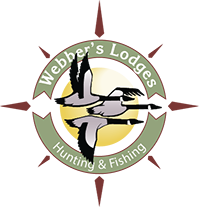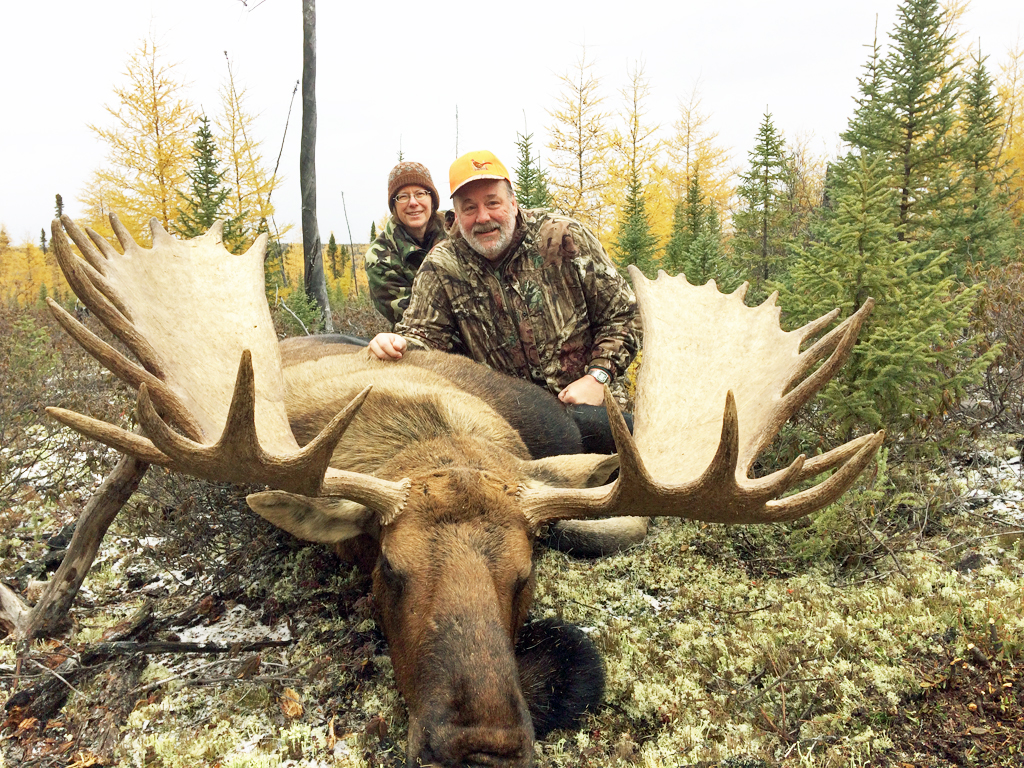by Russ Mehling, General Manager, Webber’s Lodges
On your hunt of a lifetime, rifle selection is crucial.
One of the most common questions asked by hunters is, “What size of rifle will I need to hunt (insert species here)?” My answer to this, and many of their questions, is much longer and in depth than they anticipated.
So much is determined at the moment when you pull the trigger. The last thing you want running through your mind is whether your weapon will perform adequately. The rifle you choose to bring on any hunt will be one of the most important decisions you’ll make.
I’ll try to summarize the information I share with hunters by breaking it down into three important considerations, from least to most important.
#3 Rifle Calibre
There is now a ridiculous amount of selection with regards to calibres. From the most common old standbys such as the 30.06 to the nearly unlimited amount of new calibres, not including the many wildcats currently out there. Obviously, you want to select a calibre that will offer you a bullet size that can deliver adequate “knock down” power to the game you are hunting. Our hunts feature game ranging from 250-pound caribou to thousand-pound plus moose, and then there are the grizzly hunts! I will concentrate on the MINIMUM calibres I would recommend, in relation to the species being hunted.
Our caribou bulls are not as large as most people think. Sure, they have sweeping, majestic racks, but when you closely inspect the animal you realize a good bull will weigh between 250-300 pounds, with the odd bull breaking the 300-pound mark. These animals can be taken very cleanly with common rounds such as the .270, 7 mm, or similar.
Musk ox bulls are incredibly deceptive. Most hunters walk up to their musk ox and say, “I thought they were bigger!” After we have dressed the animal, they look at the bone structure and realize why this stocky beast can weigh over 600 pounds. As dense as these animals are, over-sized calibres are not necessary. The magnum calibre rifles brought on these hunts always amazes me. When asked, I always recommend something in the .300 range, such as 30.06 or .308.
The moose sub-species we are hunting can and will go over 1,000 pounds consistently. Moose are big animals, but surprisingly not that tough when compared to some of their smaller cousins. That being said, they are heavy animals, and no one wants to carry that delicious moose meat too far, so I generally mention using a magnum calibre for these beasts — 300 or 338 mags are excellent choices and keep the recovery jobs short.
Lastly, we have the grizzly bear. This is where I stray from my normal “err on the side of smaller calibres.” When it comes to a situation where the hunter may become the hunted, I want the hunter to be shooting as much gun as possible. Yes, I know a well-placed bullet from most modern firearms will put down a grizzly, but the issue is how well-placed the bullet will be when the hunter is faced with something as aggressive as a grizzly bear! I always recommend as much gun as you can shoot comfortably when it comes to grizzly hunting.
#2 Bullet Construction
For all the game species we offer, I always mention bullet construction as important — if not more important — than calibre. Once you have decided on a calibre, look into getting a well constructed, heavy bullet.
The weight of the bullet will affect the trajectory, but it will also improve the energy with which it strikes your target. The trajectory may be addressed by practising diligently with your firearm at expected distances, learning aiming points at different ranges. Nothing can replace the extra knock-down power of a heavier bullet.
The construction of the bullet is also very important. Again, for our game – from caribou to moose – I like to see bonded or A-frame style bullets. We want to avoid rapidly expanding bullets that usually fragment during penetration. Bonded, or A-frame bullets retain a large percentage of their weight during impact by holding together and by their controlled expansion. These bullets dissipate large amounts of energy into the animal, while creating excellent wound channels, leading to quick, clean kills.
#1 Comfort
What I don’t want to see happen is someone deciding that they need an entire new arsenal because they will be hunting something new or different to them. Seeing a hunter step off the float plane with a brand new, shiny gun will make most guides nervous. Any guide will tell you they’d rather see a smaller gun shot accurately than a hunter shooting too much gun.
No matter what the species, the level of comfort you have with your firearm will be most important. If you are comfortable shooting your gun, you will practise with it more, making you a better shot at that moment of truth. If you’re comfortable with the weight of your gun, you’ll be able to carry it on long hikes and over long days, keeping you in the field hunting harder and longer. If you’re comfortable with the fit of your gun, it will be easier to bring it up and get on target at the moment of truth.
Lastly, if you’re comfortable with the performance of your firearm, you’ll be more confident when it’s time to pull the trigger. I think everyone can agree there is always a better result when you believe in yourself and your equipment.










Leave A Comment